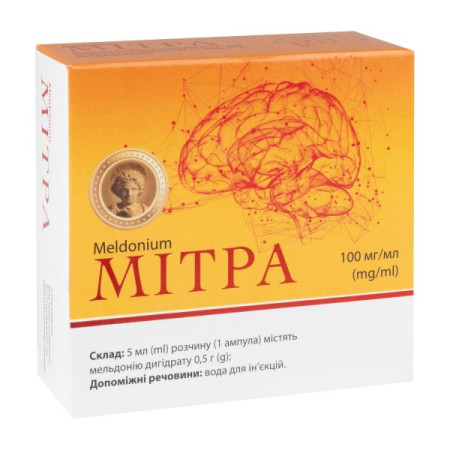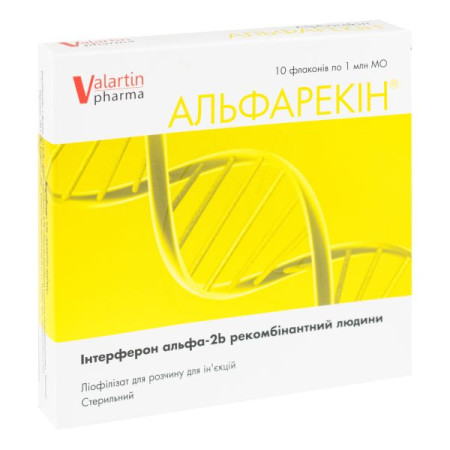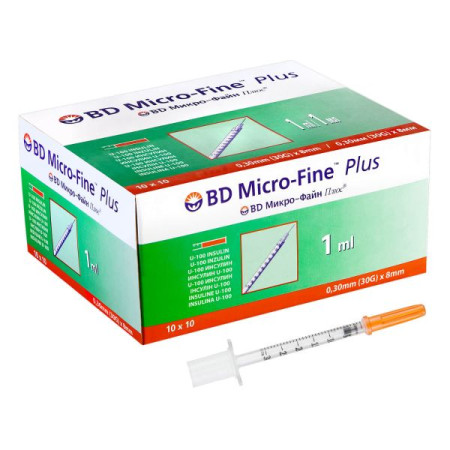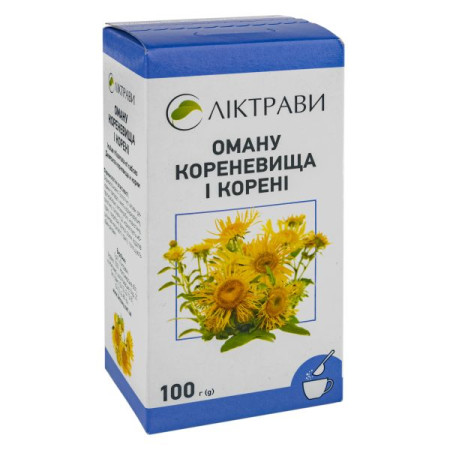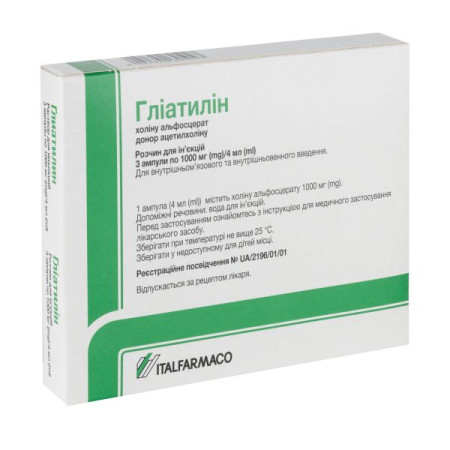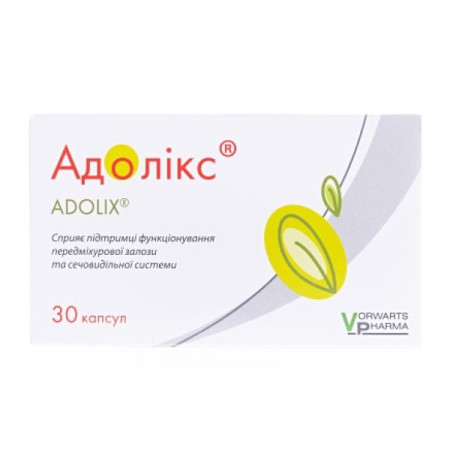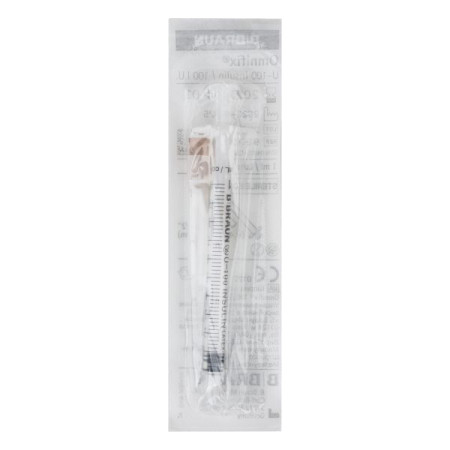Prograf capsules 1 mg blister No. 50

Pharmacological properties
Pharmacodynamics. At the molecular level, the effects of tacrolimus are mediated by binding to a cytosolic protein (FKBP12), which is responsible for intracellular accumulation of the drug. The FKBP12-tacrolimus complex specifically and competitively binds to and inhibits calcineurin, resulting in calcium-dependent inhibition of T-cell signal transduction pathways, thereby preventing transcription of a discrete group of lymphokine genes.
Tacrolimus is a highly active immunosuppressive agent that inhibits the formation of cytotoxic lymphocytes, which are mainly responsible for transplant rejection, reduces T-cell activation, T-helper-dependent B-cell proliferation, as well as the formation of lymphokines (such as interleukins-2, -3 and γ-interferon), and the expression of the interleukin-2 receptor.
Pharmacokinetics. Absorption. Tacrolimus capsules are absorbed from the gastrointestinal tract.
Tacrolimus Cmax reaches a peak (Tmax) after approximately 1-3 hours. In some patients, the drug is absorbed over a prolonged period, achieving a relatively uniform absorption profile.
The bioavailability of tacrolimus when taken orally is on average 20-25%.
After oral administration (0.3 mg/kg/day) of the drug to liver transplant patients, steady-state concentrations were reached within 3 days in most patients.
In healthy volunteers, Prograf 0.5 mg, Prograf 1 mg, and Prograf 5 mg have been shown to be bioequivalent when administered at equivalent doses.
The rate and extent of absorption of tacrolimus is related to administration on an empty stomach. Concomitant administration with food reduced the rate and extent of absorption of tacrolimus, which was most pronounced after a high-fat meal. The effect of a high-carbohydrate meal was less pronounced.
In stable liver transplant patients, the bioavailability of PROGRAF was reduced when administered orally after a moderate-fat meal. There was also a decrease in AUC (27%), Cmax (50%) and an increase in Tmax (173%) in undiluted blood. In a study of stable kidney transplant patients, oral administration of Prograf immediately after a standard light breakfast had a less pronounced effect on bioavailability. There was a decrease in AUC (2-12%), a decrease in Cmax (15-38%) and an increase in tmax (38-80%) in undiluted blood.
Bile secretion does not affect the absorption of Prograf.
There is a significant correlation between AUC and trough levels of the drug in undiluted blood at steady state, and therefore monitoring of trough levels of the drug in undiluted blood may help in adequately assessing the systemic exposure of the drug.
Distribution. The distribution of tacrolimus after intravenous administration can be described as biphasic. In the systemic circulation, tacrolimus is extensively bound to erythrocytes. The ratio of undiluted blood to plasma concentration is 20:1. In plasma, the drug is extensively bound to proteins (98.8%), mainly to serum albumin and α1 acid glycoprotein.
Tacrolimus is widely distributed in the body. The steady-state volume of distribution (based on plasma concentration) is 1300 l (healthy volunteers). The corresponding figure based on undiluted blood is 47.6 l.
Tacrolimus is a drug with low clearance. In healthy volunteers, the average total clearance, estimated from the concentration of the drug in undiluted blood, is 2.25 l/h. In adult patients with liver and kidney transplants, the value of this parameter is 4.1 and 6.7 l/h, respectively. In children with liver transplants, the total clearance is 2 times higher than in adult patients with liver transplants.
Factors that may increase clearance include low hematocrit and protein (leading to increased unbound tacrolimus levels) or increased metabolism due to corticosteroids.
The half-life of tacrolimus is long and variable. In healthy volunteers, the mean half-life from undiluted blood is 43 hours. In adult and pediatric liver transplant patients, the mean half-life is 11.7 and 12.4 hours, respectively, compared with 15.6 hours in adult kidney transplant patients.
In transplant patients, increased drug clearance leads to a decrease in T½.
Metabolism: Tacrolimus is metabolized in the liver by cytochrome P450 3A4. To a significant extent - in the intestine.
Several metabolites have been identified. Only one metabolite has been shown to have significant immunosuppressive activity in vitro. The others have little or no activity. Only one metabolite is found in the systemic circulation at low concentrations. Thus, the metabolites do not contribute to the pharmacological activity of tacrolimus.
Elimination: Following oral administration of 14C-labelled tacrolimus, most of the radiolabelled drug was excreted in the faeces. Approximately 2% was excreted in the urine. Less than 1% of unchanged tacrolimus was recovered in both urine and faeces. This indicates that tacrolimus is almost completely metabolised before elimination. The main route of elimination is via the bile.
Concentrate for preparation of solution for intravenous administration
In the systemic circulation, tacrolimus is extensively bound to erythrocytes. The ratio of distribution in undiluted blood to plasma concentrations is approximately 20:1. In plasma, the drug is extensively bound to proteins (98.8%), mainly to serum albumin and α1 acid glycoprotein.
Tacrolimus is widely distributed in the body. The steady-state volume of distribution based on plasma concentrations is approximately 1300 l (healthy volunteers). The corresponding figure based on undiluted blood is on average 47.6 l.
Tacrolimus is a drug with low clearance. In healthy volunteers, the average total clearance, estimated from undiluted blood concentrations, is 2.25 l/h. In adult liver and kidney transplant patients, this parameter reaches 4.1 and 6.7 l/h, respectively. In adults with liver transplants, the total clearance is approximately 2 times higher than in adult liver transplant patients.
The half-life of tacrolimus is long. In healthy volunteers, the mean half-life from undiluted blood is approximately 43 hours. In adult and pediatric liver transplant patients, the mean half-life is 11.7 and 12.4 hours, respectively, compared with 15.6 hours in adult kidney transplant patients.
Metabolism. Using in vitro models, 8 metabolites were identified, of which only one has significant immunosuppressive activity.
Tacrolimus is extensively metabolized by hepatic microsomal cytochrome CYP 3A4.
Elimination: Following administration of 14C-labelled tacrolimus, most of the radiolabelled drug was excreted in the faeces. Approximately 2% was excreted in the urine. Less than 1% of unchanged tacrolimus was recovered in the urine and faeces, indicating that tacrolimus is almost completely metabolised before elimination. The main route of elimination is via the bile.
Indication
capsules
prevention of rejection in kidney, liver and heart allotransplantation; treatment of allograft rejection resistant to treatment with other immunosuppressive drugs.Concentrate for preparation of solution for intravenous administration
Prevention and treatment of liver, kidney and heart allograft rejection.
Treatment of allograft rejection resistant to other immunosuppressive therapy regimens.
Application
Capsules. Prograf therapy requires close supervision by appropriately qualified personnel with appropriate equipment. This medicinal product should only be prescribed and switched to immunosuppressive therapy by physicians experienced in the administration of immunosuppressive therapy in transplant recipients.
Accidental, unintentional or uncontrolled switching between immediate- or prolonged-release formulations of tacrolimus is dangerous. This may lead to graft rejection or an increase in adverse reactions, including under- or over-immunosuppression, due to clinically significant differences in systemic exposure to tacrolimus. Patients should remain on a single formulation of tacrolimus with an appropriate daily dosing schedule; changes in formulation or regimen should only be made under the supervision of a transplant specialist (see Precautions, Adverse Reactions). After switching to any alternative formulation, blood tacrolimus concentrations should be monitored and the dose adjusted to maintain adequate systemic exposure to tacrolimus.
General information
The dose of Prograf should be determined primarily based on a clinical assessment of the risk of rejection and individual tolerability of the drug, taking into account the monitoring of tacrolimus blood levels (see Recommendations for determining the trough blood concentration). If clinical symptoms of rejection appear, the need for correction of the immunosuppressive therapy regimen should be considered.
Prograf can be administered intravenously and orally, and dosing can be initiated by oral administration. In general, oral administration can be initiated, but if necessary, the contents of the capsules should be dissolved in water and administered via a nasogastric tube.
In the initial postoperative period, Prograf should usually be used concomitantly with other immunosuppressive drugs. The dose of Prograf may vary depending on the immunosuppressive therapy chosen.
Method of application
It is recommended to divide the daily oral dose into 2 doses (morning and evening). The capsules should be taken immediately after removing them from the blister pack. The capsules should be swallowed with liquid (preferably water). To achieve maximum absorption, the drug should be taken on an empty stomach or at least 1 hour before or 2-3 hours after a meal.
To prevent transplant rejection, the state of immunosuppression must be maintained continuously; therefore, the duration of therapy is limited.
liver transplantation
Prevention of transplant rejection. Children. The initial dose of the drug for oral administration is 0.3 mg/kg body weight per day, divided into 2 doses (morning and evening). If the patient's clinical condition does not allow oral administration, administer by infusion over 24 hours at a dose of 0.05 mg/kg/day.
Maintenance therapy. Adults and children. During maintenance therapy, the dose of PROGRAF is reduced. In some cases, concomitant immunosuppressive drugs are withdrawn, leaving Prograf as monotherapy. Improvement in the patient's condition after transplantation may change the pharmacokinetics of tacrolimus, therefore there is a need for dose adjustment of the drug.
Treatment of rejection. Adults and children. For the treatment of rejection, higher doses of PROGRAF are used together with additional GCS therapy and short courses of mono- or polyclonal antibodies. If signs of toxicity are observed (see Adverse Reactions), a reduction in the dose of PROGRAF may be necessary. When transferring patients to PROGRAF therapy, the same starting doses as for primary immunosuppression are recommended. When transferring patients from ciclosporin therapy to PROGRAF, see Special Populations, Conversion (switching) from ciclosporin to tacrolimus.
kidney transplant
Prevention of transplant rejection. Adults Oral therapy with PROGRAF is started at a dose of 0.2-0.3 mg/kg body weight 2 times a day (morning and evening). The drug should be started within 24 hours after the end of the operation. If the patient's condition does not allow taking the drug orally, administer intravenously by infusion for 24 hours at a dose of 0.05-0.1 mg/kg/day.
Prevention of transplant rejection. Children. The initial dose of the drug for oral administration is 0.3 mg/kg body weight per day, divided into 2 doses (morning and evening). If the patient's clinical condition does not allow oral administration, administer by infusion over 24 hours at a dose of 0.075-0.1 mg/kg/day.
Maintenance therapy. Adults and children. During maintenance therapy, the dose of PROGRAF is reduced. In some cases, concomitant immunosuppressive drugs are withdrawn, leaving Prograf as monotherapy. Improvement in the patient's condition after transplantation may change the pharmacokinetics of tacrolimus, therefore there is a need for dose adjustment of the drug.
Treatment of rejection. Adults and children. For the treatment of rejection, higher doses of PROGRAF are used together with additional GCS therapy and short courses of mono- or polyclonal antibodies. If signs of toxicity are observed (see Adverse Reactions), a reduction in the dose of PROGRAF may be necessary. When transferring patients to PROGRAF therapy, the same starting doses as for primary immunosuppression are recommended. When transferring patients from ciclosporin therapy to PROGRAF, see Special Populations, Conversion (switching) from ciclosporin to tacrolimus.
heart transplant
Prevention of transplant rejection. Adults. Prograf can be used simultaneously with antibody induction (taking into account the delayed start of PROGRAF therapy) or without the appointment of antibodies in clinically stable patients. After antibody induction, oral therapy with PROGRAF is started at a dose of 0.075 mg/kg/day, divided into 2 doses (morning and evening). The drug should be started within 5 days after the end of the operation, as soon as the patient's clinical condition stabilizes. If the patient's condition does not allow taking the drug orally, it is administered intravenously by infusion for 24 hours at a dose of 0.01-0.02 mg/kg/day.
An alternative approach is to start oral tacrolimus within 12 hours of transplantation. This approach is intended for patients without evidence of organ dysfunction (renal). In this case, tacrolimus at an initial dose of 2-4 mg/day is combined with mycophenolate mofetil and a glucocorticosteroid or sirolimus and a glucocorticosteroid.
Prevention of transplant rejection. Children. After heart transplantation in children, primary immunosuppression with PROGRAF can be performed both in combination with antibody induction and independently.
In cases where antibody induction is not performed, Prograf is administered as an intravenous infusion over 24 hours at a dose of 0.03-0.05 mg/kg/day until a tacrolimus concentration in undiluted blood is reached at 15-25 ng/ml. At the first clinical opportunity, the patient should be switched to oral administration of the drug at an initial dose of 0.3 mg/kg/day, which is administered 8-12 hours after the end of the intravenous infusion.
After antibody induction, oral PROGRAF therapy is initiated at a dose of 0.1-0.3 mg/kg/day, divided into 2 doses (morning and evening).
Maintenance therapy. Adults and children. In maintenance therapy, the dose of PROGRAF is reduced. Improvement in the patient's condition after transplantation may change the pharmacokinetics of tacrolimus, therefore there is a need for dose adjustment of the drug.
For information on switching patients from cyclosporine therapy to Prograf, see Precautions.
Treatment of rejection - transplantation of other organs
The recommended doses for lung, pancreas and intestinal transplantation are based on limited data from prospective clinical trials. Prograf treatment should be initiated at a dose of 0.1-0.15 mg/kg/day for lung transplant patients, 0.2 mg/kg/day for pancreas transplant patients, and 0.3 mg/kg/day for pancreas transplant patients.
special populations
Hepatic impairment: In patients with severe hepatic impairment, a reduction in the tacrolimus dose may be required to maintain tacrolimus trough levels within the recommended therapeutic range.
Renal impairment: Since renal function does not affect the pharmacokinetics of tacrolimus, no dose adjustment is necessary. However, due to the nephrotoxic potential of tacrolimus, careful monitoring of renal function (including plasma creatinine concentration, creatinine clearance calculation and urine output monitoring) is recommended.
Elderly patients: There is no information on the need for special doses in elderly patients.
Conversion from ciclosporin to tacrolimus. Caution should be exercised when transferring patients from background ciclosporin therapy to drugs with background tacrolimus therapy (see Features of use and Interaction). Therapy with the drug Prograf should be initiated after determining the concentration of ciclosporin in the blood plasma and analyzing the patient's clinical condition. Conversion should be postponed in the presence of elevated levels of ciclosporin in the blood plasma. In practice, therapy with the drug Prograf is started 12-24 hours after discontinuation of ciclosporin. After the transition, it is recommended to monitor the level of ciclosporin in the blood, since there may be an effect on the clearance of ciclosporin in the blood plasma.
Recommendations for achieving the required level of drug concentration in undiluted blood. The choice of drug dose should be based on the results of clinical assessment of the process of rejection and drug tolerance in each patient individually.
For the purpose of dose optimization, determination of tacrolimus concentration in undiluted blood using immunoassays, including semi-automated microparticle enzyme-linked immunosorbent assay (ELISA), is used. Comparison of tacrolimus concentration data in blood published in the literature with individual clinical parameters should be done with caution and based on knowledge and understanding of the assessment method used. In modern medical practice, immunoassays are used to determine tacrolimus concentration in undiluted blood.
In the early postoperative period, tacrolimus trough levels in undiluted blood should be monitored. When administered orally, tacrolimus trough levels in undiluted blood should be monitored every 12 hours immediately before the next dose. The frequency of monitoring of drug levels in the blood should depend on the clinical need. Since Prograf is a drug with a low clearance, adjustments to the dosage regimen may take several days before changes in drug levels in the blood become apparent. Blood trough levels should be monitored approximately 2 times a week during the early post-transplant period, and then periodically during maintenance therapy. It is also necessary to monitor tacrolimus trough levels in the blood after changes in the drug dose, immunosuppressive regimen, or after concomitant use with drugs that may affect tacrolimus concentrations in the blood (see Interactions with other medicinal products).
Clinical trial results suggest that most patients can be successfully treated if tacrolimus blood trough levels are maintained below 20 ng/mL. When interpreting undiluted blood concentration data, it is important to consider the clinical status of the patient.
In clinical practice, during the early post-transplant period, trough levels of the drug in undiluted blood have typically ranged from 5-20 ng/mL after liver transplantation and 10-20 ng/mL after kidney and heart transplantation. Later, during maintenance therapy after liver, kidney and heart transplantation, blood concentrations of the drug vary from 5 to 15 ng/mL.
Concentrate for solution for intravenous administration. Treatment with Prograf requires careful monitoring by highly qualified personnel and appropriate equipment. This medicinal product and any changes in immunosuppressive therapy should only be prescribed by a physician experienced in the administration of immunosuppressive therapy in transplant recipients.
The drug is administered parenterally if the patient's condition does not allow taking capsules. As soon as the patient's clinical condition improves, he is transferred to oral administration of the drug in the form of Prograf capsules.
When switching a patient from parenteral to oral tacrolimus capsules, it should be borne in mind that errors in the use of tacrolimus preparations have been noted in practice. Accidental, unintentional or uncontrolled transfer of a patient from one oral tacrolimus dosage form (standard or prolonged-release) to another is dangerous. This may lead to graft rejection or an increase in the number of cases of side effects, including insufficient or excessive immunosuppression due to relevant clinical differences in systemic exposure to tacrolimus. The patient should be prescribed tacrolimus in the form of a single dosage form with an appropriate daily dosing regimen, and a change in dosage form or regimen is possible only under careful review by a transplant specialist. For subsequent transition to any other alternative dosage forms, drug action monitoring and dose adjustment are necessary to maintain systemic exposure to tacrolimus.
General information. The recommended doses for the initial stage of treatment are presented below as guidelines. The dosage of Prograf should be based primarily on a clinical assessment of the risk of rejection and individual tolerability of the drug in each patient, as well as on monitoring of tacrolimus blood concentrations (see Precautions, recommendations for achieving the required level of drug concentration in undiluted blood).
If clinical signs of rejection appear, it is worth considering the possibility of adjusting the immunosuppressive therapy regimen.
Prograf should be administered parenterally or orally. In general, dosing can be initiated orally, if necessary by administering the contents of a capsule dissolved in water via a nasogastric tube.
Prograf is usually used in combination with other immunosuppressive drugs in the initial postoperative period. The dosage of Prograf may vary depending on the selected immunosuppressive regimen.
Prograf concentrate for solution for intravenous administration is for intravenous use only. Do not administer undiluted. Before use, it must be diluted with 5% glucose solution or 0.9% sodium chloride solution in glass, polyethylene or polypropylene containers. Only clear and colorless solutions should be used.
Jet injection of the drug is not recommended!
The concentration of the infusion solution should vary within 0.004-0.1 mg/ml. The total infusion volume per 24 hours should vary within 20-500 ml.
Any unused concentrate for infusion in an opened ampoule or unused reconstituted solution must be discarded immediately to avoid contamination.
liver transplantation
Prevention of transplant rejection. Adults. The drug should be started approximately 12 hours after the end of surgery.
If the patient's condition does not allow taking the drug orally (prograf capsules), therapy is carried out, starting with a dose of 0.01-0.05 mg/kg/day, administering the drug as an intravenous infusion for 24 hours.
Prevention of transplant rejection. Children. If the patient's condition does not allow taking the drug orally (prograf capsules), therapy is carried out starting with a dose of 0.05 mg/kg/day as an intravenous infusion for 24 hours.
Maintenance therapy. Adults and children. During maintenance therapy, the dose of Prograf is usually reduced. In some cases, concomitant immunosuppressive drugs can be withdrawn and Prograf used as monotherapy. Improvement in the patient's condition after transplantation may alter the pharmacokinetics of tacrolimus, requiring dose adjustment.
Treatment of rejection. Adults and children. For the treatment of rejection episodes, higher doses of Prograf should be used in conjunction with additional glucocorticosteroid therapy and short courses of mono/polyclonal antibodies. If signs of toxicity occur, the dose of Prograf may be reduced.
When transferring patients to Prograf therapy, the same starting doses are recommended as for the prevention of immunosuppression. When transferring patients from cyclosporine therapy to PROGRAF, see Features of use, dose adjustment of the drug in special patient groups, Transition from cyclosporine therapy.
kidney transplant
Prevention of transplant rejection. Adults. Therapy should be initiated within 24 hours of completion of surgery.
If the patient's condition does not allow the drug to be taken orally (prograf capsules), intravenous therapy should be started at a dose of 0.05-0.1 mg/kg/day, administering the drug as an intravenous infusion over 24 hours.
Prevention of transplant rejection. Children. If the patient's condition does not allow oral administration (prograf capsules), intravenous therapy should be initiated at a dose of 0.075-0.1 mg/kg/day, administered as an intravenous infusion over 24 hours.
Treatment of rejection reactions. Adults and children. For the treatment of rejection episodes, higher doses of Prograf should be used together with additional glucocorticosteroid therapy and short courses of mono/polyclonal antibodies. If signs of toxicity occur, the dose of Prograf may be reduced.
When transferring patients to Prograf therapy, the same starting doses are recommended as for the prevention of immunosuppression. When transferring patients from cyclosporine therapy to PROGRAF, see Features of use, dose adjustment of the drug in special patient groups, Transition from cyclosporine therapy.
heart transplant
Prevention of transplant rejection. Adults. Prograf should be used together with antibody induction (taking into account the delayed start of Prograf therapy). After antibody induction, the drug should be started within 5 days after the end of surgery, as soon as the patient's clinical condition stabilizes. If the patient's condition does not allow oral administration (Prograf capsules), intravenous therapy should be carried out, starting with a dose of 0.01-0.02 mg/kg/day, administered as an infusion over 24 hours.
Prevention of transplant rejection. Children. After heart transplantation in children, primary immunosuppression with Prograf can be performed either together with antibody induction or alone.
In cases where antibody induction is not performed, Prograf should be administered intravenously at an initial dose of 0.03-0.05 mg/kg/day, administered as an infusion over 24 hours until a tacrolimus concentration in undiluted blood of 15-25 ng/ml is achieved. At the earliest clinical opportunity, the patient should be switched to oral administration (Prograf capsules) at an initial dose of 0.30 mg/kg/day, administered 8-12 hours after the end of the infusion.
Maintenance therapy. Adults and children. During maintenance therapy, the dose of Prograf is reduced. Improvement in the patient's condition after transplantation may alter the pharmacokinetics of tacrolimus, requiring dose adjustment.
Treatment of rejection. Adults and children. For the treatment of rejection episodes, the use of Prograf in higher doses is necessary together with additional GCS therapy and short courses of mono/polyclonal antibodies.
When transferring adult patients to therapy with Prograf capsules, the initial dose of the drug 0.15 mg/kg/day should be divided into 2 doses (morning and evening).
When transferring children to therapy with Prograf capsules, the initial dose of the drug 0.2-0.3 mg/kg/day should be divided into 2 doses (morning and evening).
Information on transferring patients from cyclosporine therapy to PROGRAF is provided in the section Features of use, dose adjustment of the drug in special patient groups. Transfer from cyclosporine therapy.
Contraindication
Hypersensitivity to tacrolimus (or other macrolides) and other inactive ingredients of the drug.
Side effects
Due to the characteristics of the underlying disease and the large number of drugs used simultaneously after transplantation, the profile of side effects of immunosuppressants is difficult to accurately establish.
Many of the adverse reactions listed below are reversible and/or dose-related. Within each group, adverse reactions are presented in order of decreasing seriousness. Oral administration of the drug is associated with fewer adverse reactions than intravenous administration.
Adverse reactions are classified by organ system and are listed below according to frequency: very common (≥1/10); common (≥1/100 to <1/10); uncommon (≥1/1,000 to <1/100); rare (≥1/10,000 to <1/1,000); very rare (≥1/10,000), not known (insufficient data to estimate frequency).
Vascular disorders: very often - hypertension; often - bleeding, thromboembolic and ischemic complications, peripheral circulatory disorders, arterial hypotension; infrequently - heart attack, deep vein thrombosis of the extremities, shock.
From the heart: often - ischemic coronary disorders, tachycardia; infrequently - ventricular arrhythmia and cardiac arrest, heart failure, cardiomyopathy, ventricular hypertrophy, supraventricular arrhythmia, tachycardia, ECG changes, rhythm disturbances, heart rate and pulse, pericarditis; rarely - pericardial effusion; very rarely - changes in echocardiographic parameters.
From the digestive system: very often - diarrhea, nausea; often - inflammatory diseases of the gastrointestinal tract, the occurrence of ulcers and perforation of the gastrointestinal tract, gastrointestinal bleeding, stomatitis and ulceration of the oral mucosa, ascites, vomiting, abdominal pain, dyspepsia, constipation, flatulence, a feeling of bloating and distension in the abdomen, diarrhea; infrequently - paralytic intestinal obstruction (paralytic ileus), peritonitis, acute and chronic pancreatitis, increased plasma amylase levels, gastroesophageal reflux disease, impaired gastric evacuation function; rarely - partial intestinal obstruction (subileus), pancreatic pseudocyst.
From the blood and lymphatic system: very often - leukocytosis; often - anemia, leukopenia, thrombocytopenia, leukocytosis, changes in erythrocytes; infrequently - coagulopathy, changes in coagulogram parameters, pancytopenia, neutropenia; rarely - thrombotic thrombocytopenic purpura, hypoprothrombinemia; unknown - myasthenic crisis, interstitial pneumonia.
From the urinary system: very often - impaired renal function, increased creatinine concentration, pN-microglobulin, increased N-acetyl-beta-D-glucosaminidase in the urine, proteinuria; often - renal failure, acute renal failure, oliguria, acute tubular necrosis, toxic nephropathy, urinary syndrome, disorders of the bladder and urethra; infrequently - anuria, hemolytic uremic syndrome; very rarely - nephropathy, hemorrhagic cystitis.
Metabolism and digestion: very often - hyperglycemia, diabetes mellitus, increased glycosylated hemoglobin, hyperuricemia, hypomagnesemia, hyperkalemia; often - hypomagnesemia, hypophosphatemia, hypokalemia, hypocalcemia, hyponatremia, glucosuria, hypervolemia, hyperuricemia, decreased appetite, anorexia, metabolic acidosis, hyperlipidemia, hypercholesterolemia, hypertriglyceridemia, electrolyte disturbances; infrequently - dehydration, hypoproteinemia, hyperphosphatemia, hypoglycemia.
Musculoskeletal and connective tissue disorders: common: arthralgia, muscle cramps, pain in extremities, back pain; uncommon: joint disorders.
From the nervous system: very often - tremor, headache; often - impaired consciousness, paresthesia and dysesthesia, peripheral neuropathy, dizziness, dysgraphia, impaired nervous system function; infrequently - coma, cerebral hemorrhage and cerebral circulation disorders, paralysis and paresis, encephalopathy, speech and articulation disorders, amnesia; rarely - increased muscle tone; very rarely - myasthenia gravis.
From the respiratory system and mediastinal organs: very often - nasopharyngitis; often - shortness of breath, pulmonary disorders, pleural effusion, pharyngitis, cough, nasal congestion, rhinitis; infrequently - respiratory failure, respiratory tract disorders, asthma; rarely - acute respiratory distress syndrome.
Skin and subcutaneous tissue disorders: common: itching, rash, alopecia, acne, hyperhidrosis; uncommon: dermatitis, photosensitivity; rare: toxic epidermal necrolysis (Lyell's syndrome); very rare: Stevens-Johnson syndrome.
General disorders and complications: often - asthenia, fever, edema, pain and discomfort, increased ALP levels in blood plasma, weight gain, thermoregulation disorders; infrequently - multiple organ failure, flu-like syndrome, impaired thermal sensitivity, feeling of tightness in the chest, feeling of anxiety, worsening of well-being, increased LDH levels in blood plasma, weight loss; rarely - thirst, loss of balance (fall), difficulty in movement; very rarely - increased adipose tissue mass.
Benign, malignant and unidentified neoplasms: uncommon/common - lymphoma or other malignancy; patients receiving immunosuppressive therapy are at increased risk of developing malignancies; both benign and malignant neoplasms, including Epstein-Barr virus (EBV)-associated lymphoproliferative diseases and skin cancer, have been reported with tacrolimus.
Immune system disorders (allergic reactions): Allergic and anaphylactic reactions have been reported in patients taking tacrolimus (see Precautions).
On the part of the immune system (infections and invasions): against the background of therapy with tacrolimus, as with other immunosuppressants, the risk of developing local and generalized infectious diseases (viral, bacterial, fungal, protozoal) increases.
There are no reviews for this product.
There are no reviews for this product, be the first to leave your review.
No questions about this product, be the first and ask your question.




